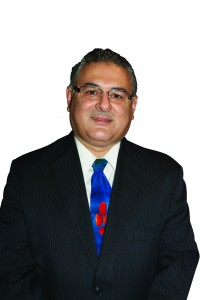Dr Nashat Nafouri, the CEO and President of the Saudi Quality Council, in conversation with B Surendar. Where is the GCC on air quality efforts? Until now, there is no strong structure to air quality efforts in the region, or a national or regional declaration on air quality. If you compare to North America, ASHRAE […]
Dr Nashat Nafouri, the CEO and President of the Saudi Quality Council, in conversation with B Surendar.
 Where is the GCC on air quality efforts?
Where is the GCC on air quality efforts?
Until now, there is no strong structure to air quality efforts in the region, or a national or regional declaration on air quality. If you compare to North America, ASHRAE has a standard for IAQ. And then, you have the US EPA taking efforts.
What is the specific situation in schools? Are children being examined for the presence of lead in the blood, for instance?
We don’t have any scientific chapter on schools, in the region. And schools don’t monitor for the presence of lead in the blood.
For 35 years running, schools have continued to use RACs. Accreditation and excellence models have helped the industry to move from RACs to a sustainable environment. Do we have monitoring for VOCs and standards on how often the built-environments need to be monitored? No. Is lead in paints being addressed? No. And are surveillance measures being carried out at the pre-school level beyond certificates submitted by parents? No.
The Ministry of Education in Saudi Arabia is going towards a standard, but still it is at the initial stages.
As for the Saudi Quality Council, I started with the basics at schools, including teaching the students how to segregate chemicals. We look at it from a Material Safety Data (MSD) perspective and are teaching students how to safely handle chemicals, based on the WHO classification. Yellow represents reactivity, blue health and red flammability. We want children to recognise the colours and say “If it is blue, it is okay for my health.” We are also teaching the difference between a moist class and a healthy class. We have training for teachers and administrators on how important health is along with mental growth. I have five schools in total where I have started teaching IAQ culture.
What can be done, enforcement-wise, to bring about qualitative change?
We need the local body to put a monitoring and licensing process in place. We need more occupational labs to come up and, prior to that, work out who licenses these labs. For instance, how do we know the results are accurate? Now, the questions to ask are: Do we have public health labs? Who does VOC measurements? Who does the PPM programme in all schools? If you have these embedded in your strategy, you can have funding.
There are international references to learn from. The US EPA has a good package for IAQ in schools. There is none in the region. If we want a similar climate, we can take a look at Florida, which has hot, humid conditions, and identical moisture and mould-related problems.
Copyright © 2006-2025 - CPI Industry. All rights reserved.